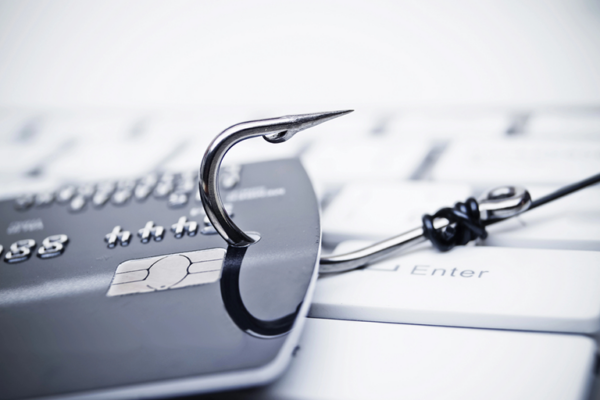These days, the terms “credit card fraud” and “identity theft” are often mentioned in the same breath, yet they describe fundamentally different issues. Both can have devastating effects on individuals’ financial lives, but understanding their distinctions is crucial for effective prevention and resolution. Raburn Kaufman dedicates its credit report attorneys to informing the customers about credit card fraud vs. identity theft and offering guidance on navigating these complex challenges. Let us explain the differences between these two.
What is Credit Card Fraud?
Credit card fraud occurs when someone unlawfully uses your credit card information to make unauthorized purchases or withdraw funds from your account. This type of fraud can manifest in various forms, from the physical theft of a card to the unauthorized use of card details online. It is a specific, immediate crime with direct financial impacts, often detectable when you notice unexplained charges on your account or receive alerts from your financial institution.
Common Scenarios of Credit Card Fraud
- Skimming Devices: These are installed on ATMs or gas pumps to capture information from credit cards.
- Phishing Attacks: Fraudulent communications, often via email or text, that trick victims into providing card details.
- Data Breaches: Large-scale hacks into company databases that result in the theft of credit card information.
What is Identity Theft?
Identity theft is broader and potentially more invasive than credit card fraud. It involves the unauthorized acquisition and use of someone else’s personal information to commit fraud or theft. The information includes names, Social Security numbers, and bank account details, which can be used to commit various crimes, including credit card fraud.
How Identity Theft Occurs
- Mail Theft: Stealing personal information directly from unsecured mailboxes.
- Unsecured Internet Connections: Capturing personal data through public Wi-Fi networks.
- Dark Web Activities: Buying and selling personal information on illegal online marketplaces.
How Identity Theft Facilitates Credit Card Fraud
When identity thieves steal personal information, they can use it to open new credit accounts in your name, potentially leading to credit card fraud. For example, with enough information, a thief can apply for a credit card using your identity, receive the card, and begin making purchases—all without your knowledge. The form of fraud is particularly insidious because it can go unnoticed until significant damage has been done, often complicating the recovery process.
Credit Card Fraud Vs. Identity Theft: Understanding the Differences
Recognizing the difference between credit card fraud vs. identity theft is essential because it influences how you protect yourself and respond to each situation. Credit card fraud, while serious, can usually be resolved by contacting your card issuer to report the fraud, closing the affected account, and having the fraudulent charges removed—a process sometimes facilitated by a credit report dispute.
Identity theft requires a more comprehensive approach, given its potential to affect various aspects of your life. Victims may need to work extensively with credit bureaus, possibly enlist the help of an identity theft lawyer, and take additional steps like freezing their credit to prevent further misuse of their stolen identity. In both cases, proactive monitoring of your financial and personal information plays a crucial role in prevention.
Impact and Response: Navigating the Consequences of Fraud and Theft
1. Dealing with Credit Card Fraud
When faced with credit card fraud, the immediate concern is stopping the fraudulent activity and preventing further financial loss. Here is how you can respond effectively:
- Report Immediately: Contact your credit card issuer as soon as you suspect fraud or notice unauthorized charges. Most companies have a 24-hour hotline specifically for reporting fraud.
- Follow Up in Writing: After notifying your issuer via phone, follow up with a written statement. This can be crucial for documenting your response.
- Review Your Statements: Go through recent transactions to identify any other potential fraud.
- Monitor Your Credit: Keep an eye on your credit reports to ensure that the fraud has not affected your broader financial standing. AnnualCreditReport.com is a great resource available to consumers who wish to check their credit reports. Consumers are currently able to access their credit reports once per week using AnnualCreditReport.com.
- Change Passwords and PINs: Update your security information across financial accounts to prevent further unauthorized access.
Credit card fraud typically may not damage your credit score permanently, especially if caught and addressed quickly. However, if your credit card company refuses to remove fraudulent charges, and your account begins reporting negatively as a result of these negative charges, it is advisable to speak with an experienced credit attorney about your options under the Fair Credit Reporting Act (FCRA).
2. Addressing Identity Theft
Identity theft can have far-reaching consequences beyond initial financial loss. It can damage your credit status, create legal complications, and lead to a lengthy recovery process. Effective management includes:
- Immediate Credit Freeze: Prevent new credit accounts from being opened in your name by freezing your credit with all three major credit bureaus.
- File an Identity Theft Report: Report the theft to the Federal Trade Commission (FTC) through IdentityTheft.gov, which can help you create a recovery plan and pre-fill necessary forms.
- Notify Affected Institutions: Contact banks, credit card issuers, and other financial institutions where you hold accounts that might be compromised.
- Regular Credit Monitoring: Continuously monitor your credit reports from major credit bureaus to catch any unauthorized activity or corrections needed post-theft. This process might involve multiple credit report disputes to clear inaccuracies caused by identity theft. You can access your credit reports from AnnualCreditReport.com, a free resource for consumers, on a weekly basis.
- Legal Consultation: In cases where identity theft leads to complex legal issues, consulting with an ID theft lawyer can help navigate the challenges, especially if creditors and debt collectors wrongly target you due to debts incurred by the identity thief under your name.
Why Proactive Monitoring is Needed
Proactive monitoring of your financial transactions and personal information is the most effective way to catch fraud and identity theft early. Services that alert you to suspicious activities can significantly diminish the impact through enabling rapid response. This monitoring includes notifications of unusual activity, new account openings, significant purchases, and changes in your credit report.
Regularly checking your financial statements, using secure methods for online transactions, and staying informed about the latest security practices are also key to protecting yourself. Awareness and prompt action can not only prevent financial loss but also avoid the potential long-term consequences of identity theft, which can be much more severe and enduring than those of credit card fraud.
Prevention Techniques: Safeguarding Your Financial Identity
In the digital era, protecting your financial identity is more crucial than ever. While it is important to know how to respond to credit card fraud and identity theft, implementing strong preventive measures can greatly reduce the risk of becoming a victim. Here are practical strategies to enhance your financial security and peace of mind.
1. Strengthen Online Security
Most of the financial fraud and identity theft risks are amplified by vulnerabilities in online security. To protect yourself:
- Use Strong, Unique Passwords: Make sure that each of your financial accounts has a unique password, combining letters, numbers, and special characters.
- Enable Two-Factor Authentication (2FA): It adds an additional layer of security by requiring a second form of verification (like a code sent to your phone) before accessing accounts.
- Secure Your Home Network: Use a robust firewall and secure Wi-Fi with a strong password. Avoid conducting financial transactions over public Wi-Fi networks.
2. Educate Yourself on Phishing Scams
Phishing attacks are a common tactic used by fraudsters to trick individuals into giving away personal information. Be cautious with emails, messages, or phone calls that request sensitive information:
- Verify the Source: Always double-check the source of the communication. Contact the company directly using a known and trusted number or website.
- Do not Click on Suspicious Links: Avoid clicking on links from unknown sources. Hover over links to see the URL before clicking to ensure it directs to a legitimate site.
- Learn to Recognize Red Flags: Grammar errors, urgent language, and unsolicited requests for personal information are common indicators of phishing attempts.
3. Regularly Monitor Your Financial Statements
Stay vigilant by regularly checking your bank statements, credit card statements, and credit reports:
- Set Up Alerts: Most financial institutions offer services that notify you of unusual activity, large transactions, or new credit applications.
- Review Statements Monthly: Make it a habit to review your financial statements each month. Look for any charges or withdrawals you do not recognize.
4. Utilize Identity Monitoring Services
Consider enrolling in an identity monitoring service. These services keep an eye on your credit files and alert you to changes that could indicate fraud, such as new account openings or credit inquiries. MyFICO is a trusted monitoring service that offers different plans to meet the needs of consumers from all walks of life.
While these services cannot prevent fraud or theft, they bring an additional layer of defense by ensuring you are immediately aware of potential threats.
5. Create a Response Plan
Despite your best efforts, there is always a chance of becoming a victim of fraud or identity theft. Having a response plan in place can help you act quickly and efficiently. This plan should include:
- Contacts List: Have a list of contacts for your bank, credit card companies, the credit bureaus, and legal resources.
- Steps for Reporting: Familiarize yourself with the steps for freezing credit, filing disputes, and reporting fraud to the appropriate authorities.
Empowering Yourself Against Fraud and Identity Theft
Recognizing the nuances between credit card fraud and identity theft, knowing how to respond effectively, and taking proactive steps to protect yourself are essential in today’s financial landscape. By empowering yourself with knowledge and the right tools, you can significantly mitigate the risks associated with these financial threats.
If you believe you are a victim of credit card fraud or identity theft, it’s crucial to act quickly. Contact an ID theft attorney or credit card fraud attorney to help you navigate the complexities of these issues. An experienced attorney can provide guidance on your rights, help you resolve disputes with creditors or financial institutions, and work to restore your financial integrity and peace of mind.
By staying informed, vigilant, and proactive, you can protect not only your financial assets but also your peace of mind, ensuring a secure financial future in an increasingly digital world.
Share

